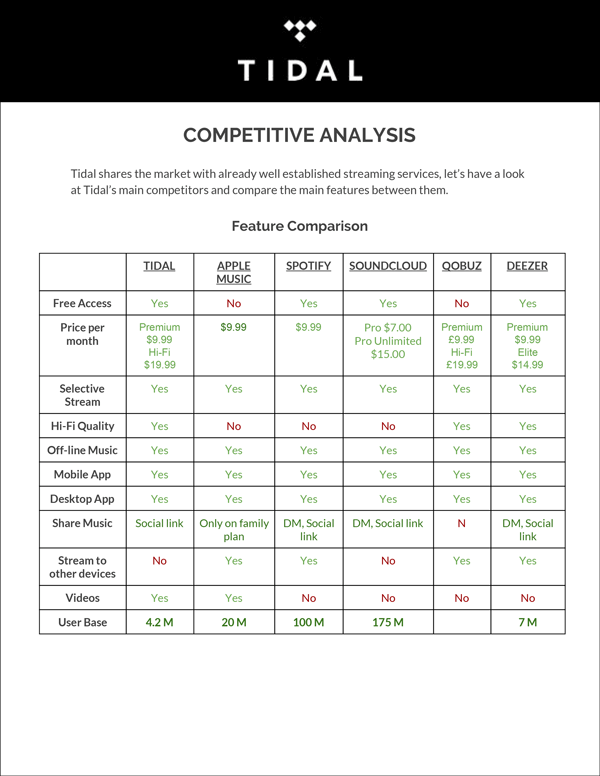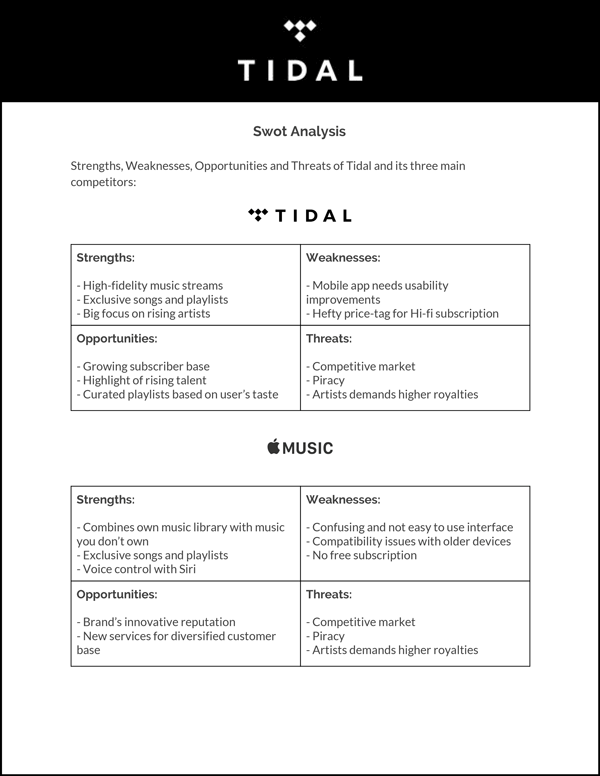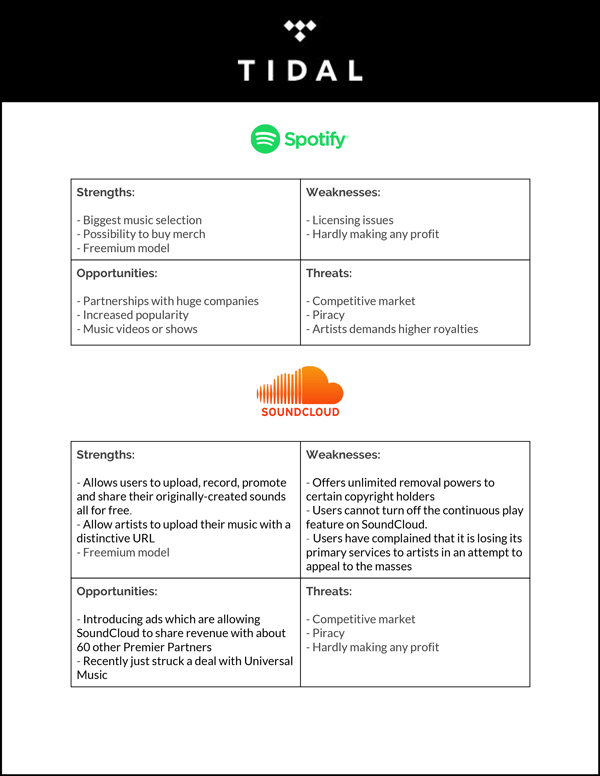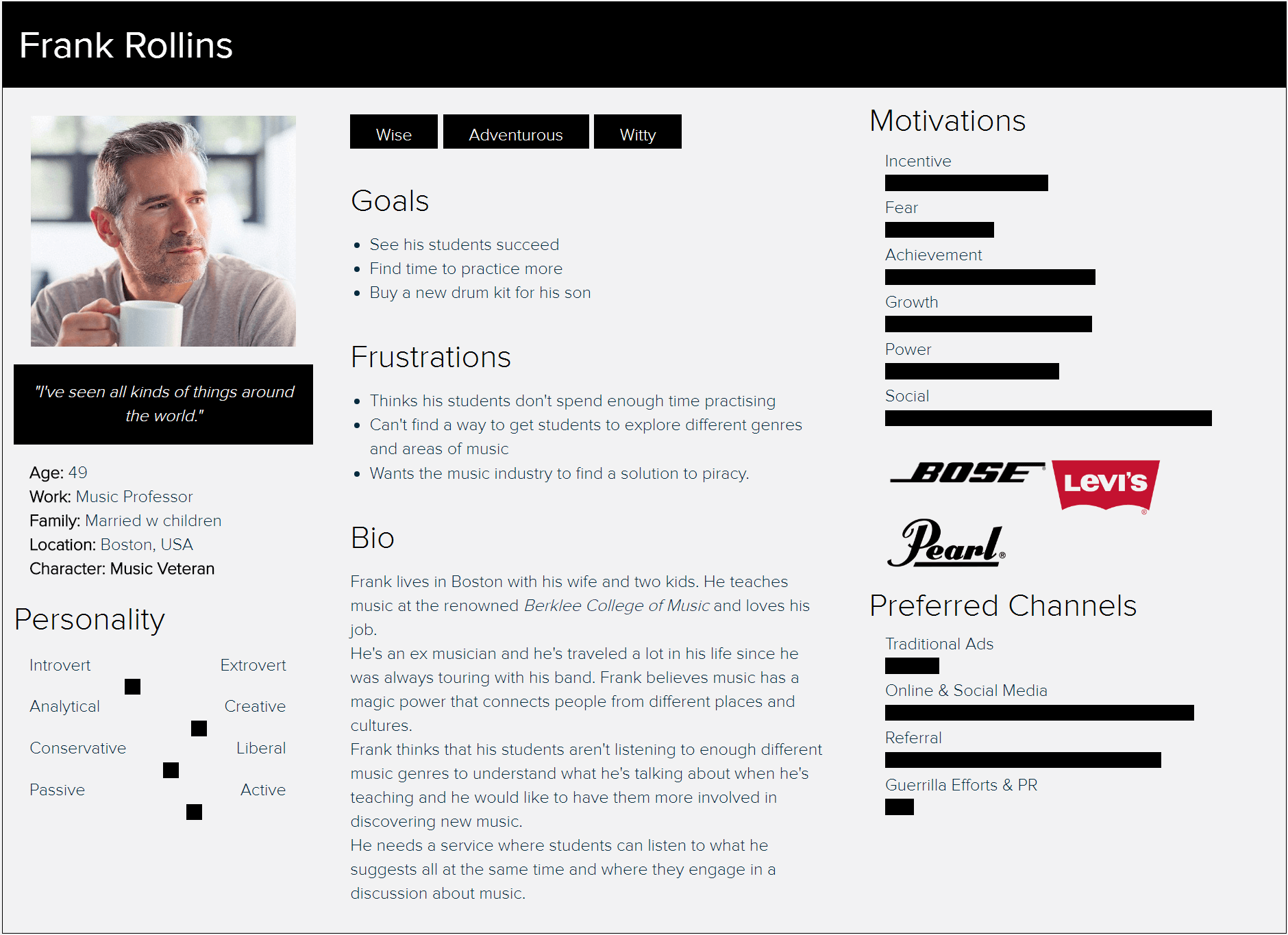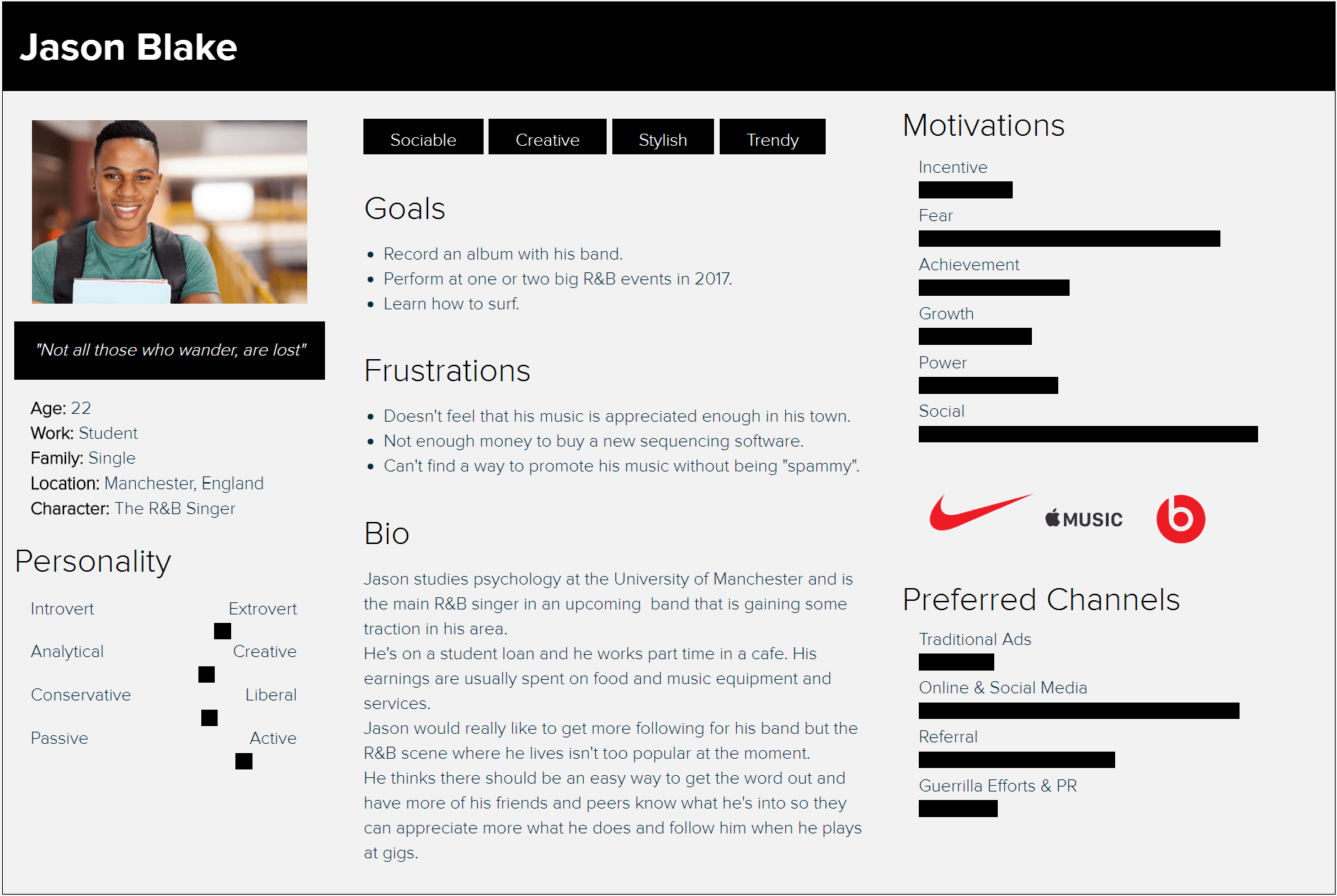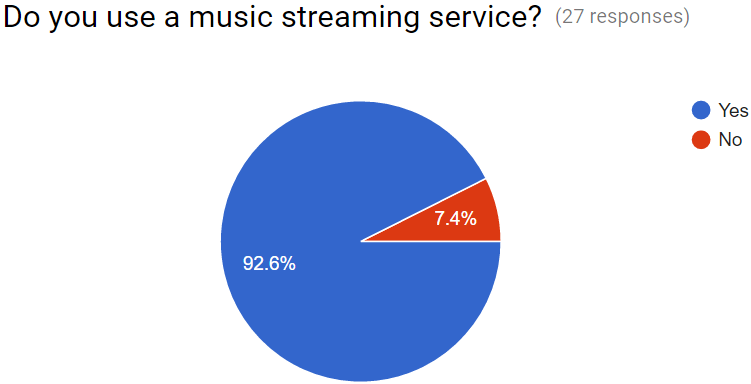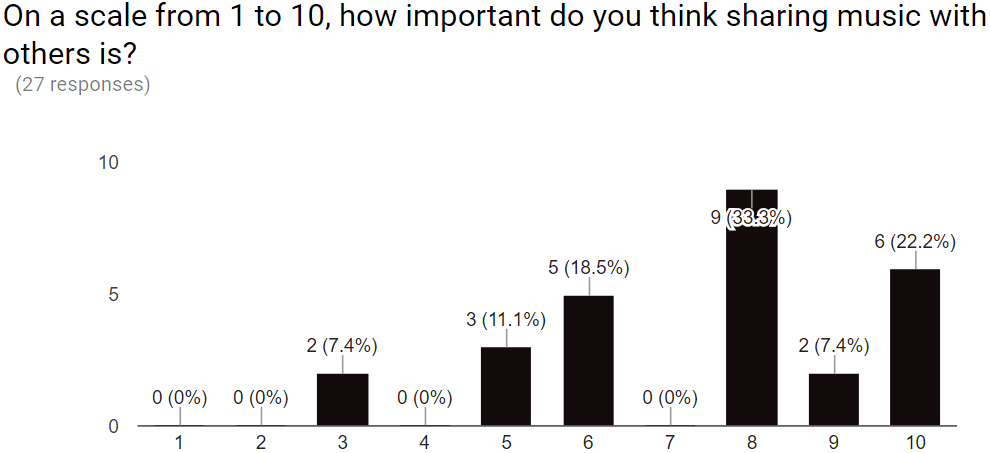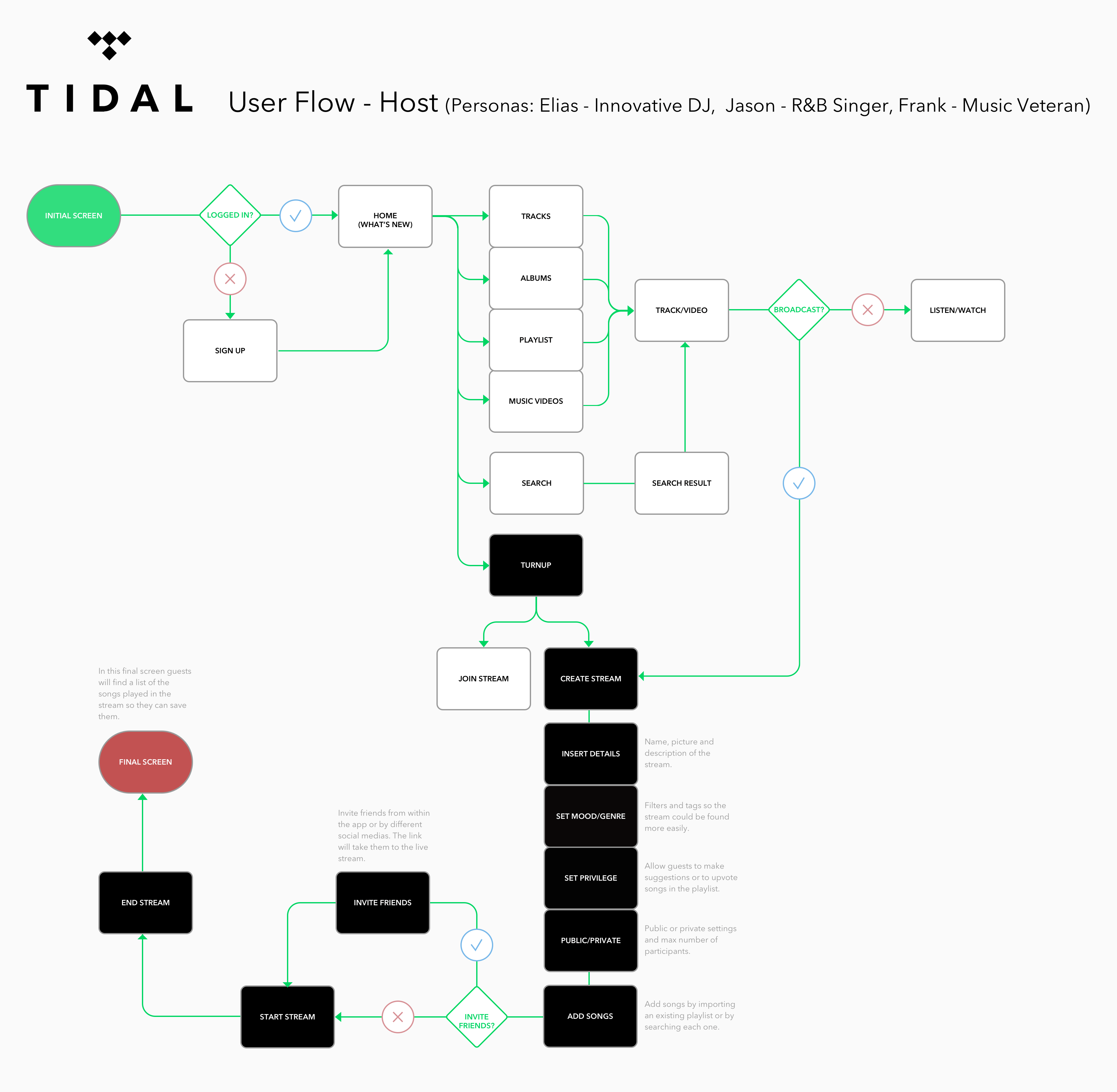Background
Designlab and Tidal are working together to enable a superior user experience for their upcoming TurnUp feature. Tidal has built custom technology to enable music lovers to share and listen in revolutionary new ways. Tidal is now seeking strategic and human-centered design direction on the interaction design and monetization strategy for this new feature set.
The challenge
The challenge for Tidal Turnup was to create a feature that is quite unique. The technology behind the TurnUp feature set allows users to simultaneously play music through multiple phones. The ability to sync an unlimited number of devices together to play music when users are in different locations could revolutionize the music sharing and listening experience . Having to work with Tidal’s existing app and design guidelines also didn’t offer much flexibility. The project also had a 4 weeks time deadline.
TL;DR
Jump to different sections of this case study
Strategy & Research
Research Plan
Before starting Phase 1 I drafted a research plan so I could have an idea of where to start from for my research.
The first questions that came to mind were these:
- Does this feature already exist?
- How would users welcome it?
- Would they find it useful?
Competitive + Swot Analysis
So I did a Competitive Analysis and Swot Analysis by targeting five main competitors of Tidal.
Here are a few key points from the results:
- Spotify is controlling the market thanks to its “freemium” model, the biggest music selection and the variety of features they offer.
- Soundcloud is rising because they offer a lot of exposure to up-and-coming artists as well as a free subscription.
- Apple Music is strong on exclusives and integration with the user’s own music library.
- Apps like Lisn, Vertigo and Liyo rely on other providers like Spotify and Soundcloud and are third-party apps.
None of the above offer a live streaming feature that Tidal is looking to implement with the introduction of TurnUp.
Personas
Once I gathered insights on our competitors I created some provisional personas to understand some of the traits of the potential user and to find out if the feature is something that users would actually use.
User Surveys
With the help of the personas I started drafting some questions for the user surveys. The questions were specific to find out more about listening habits and music sharing. Here we see a few key questions and the data gathered from the answers:
Research Findings
From my research findings, TurnUp is a feature could potentially remove the lack of social interaction that music streaming services usually have. Artists, music lovers and people who work in the music industry, can engage with each other and share opinions and feedback on songs and new releases. The new feature will have two main purposes:
- Host a streaming session
- Participate in a streaming session
Exploration & Prototyping
App Architecture
Once I defined all the requirements for the implementation, I created an application map, which helped me focusing on the key design screens and overall architecture of the feature.
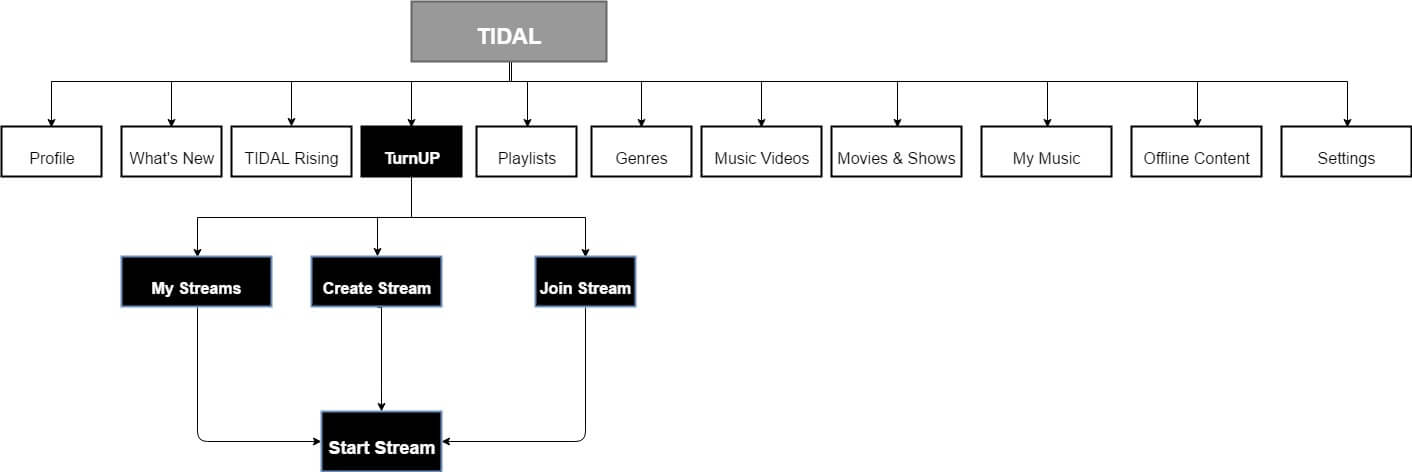
User Flows
User flows are very useful when it comes to focusing on a specific task the user needs to complete when using the features we built. In this case I created a user flow for the “Create a stream” feature for users that want to host streaming sessions and “Join a stream” feature for guest users that just want to listen and discover new songs and artists.
Sketches & Wireframes
Working on top of an existing design made me realize that there was a big opportunity to save time. At this point I already knew what features I had to implement so I started creating some annotated rough sketches of the key screens.

Design Production
High Fidelity Screens & Prototype
To keep everything as consistent as possible, all the screens I created used styles and guidelines from the already existing Tidal app. Try the prototype below or follow this link.
Conclusions
If I had more time to work on this project I would’ve focused on improving the “upvote song” feature as well as getting more rounds of feedback from users.
A video live streaming feature already used by services like Periscope, Snapchat and others is also worth exploring in the future.
Tidal should also consider implementing a “freemium” model like Spotify, a good way to monetize this could be exploring collaborations with music businesses that would be willing to pay to advertise on the platform so ads would be relevant and useful to users.
